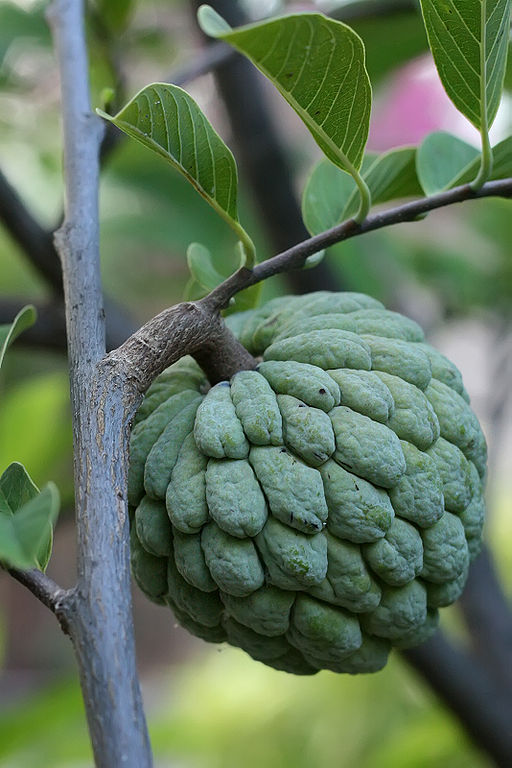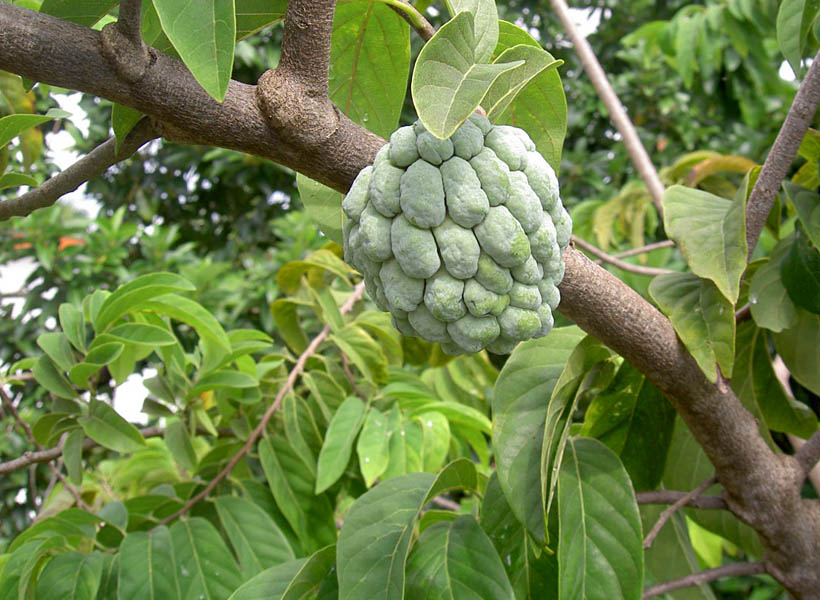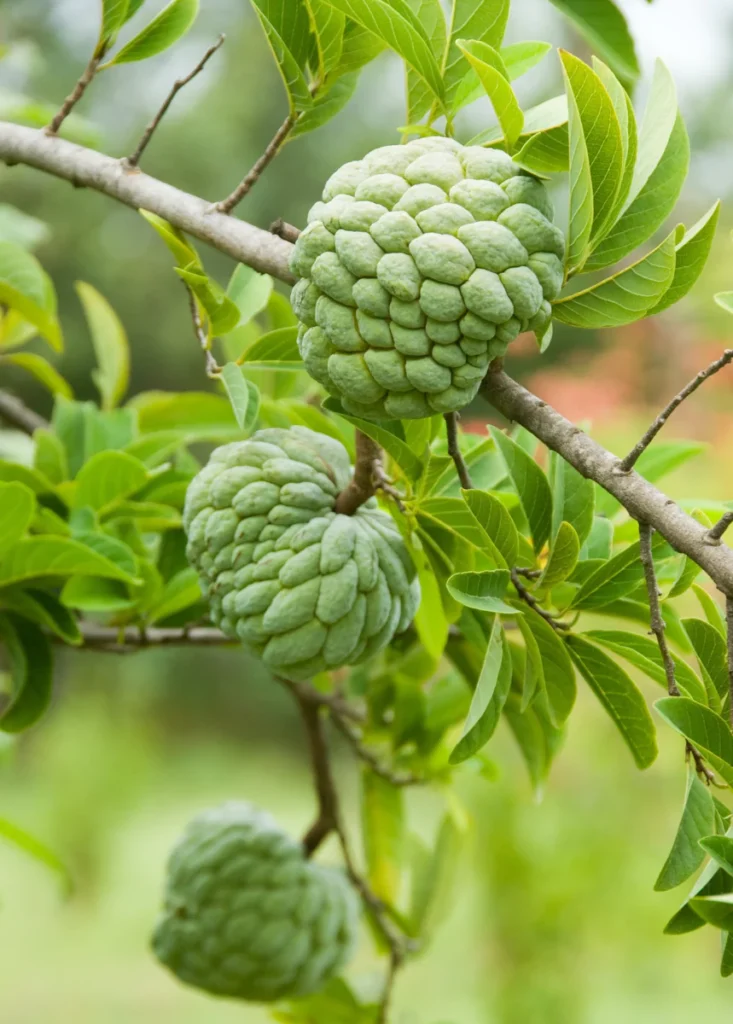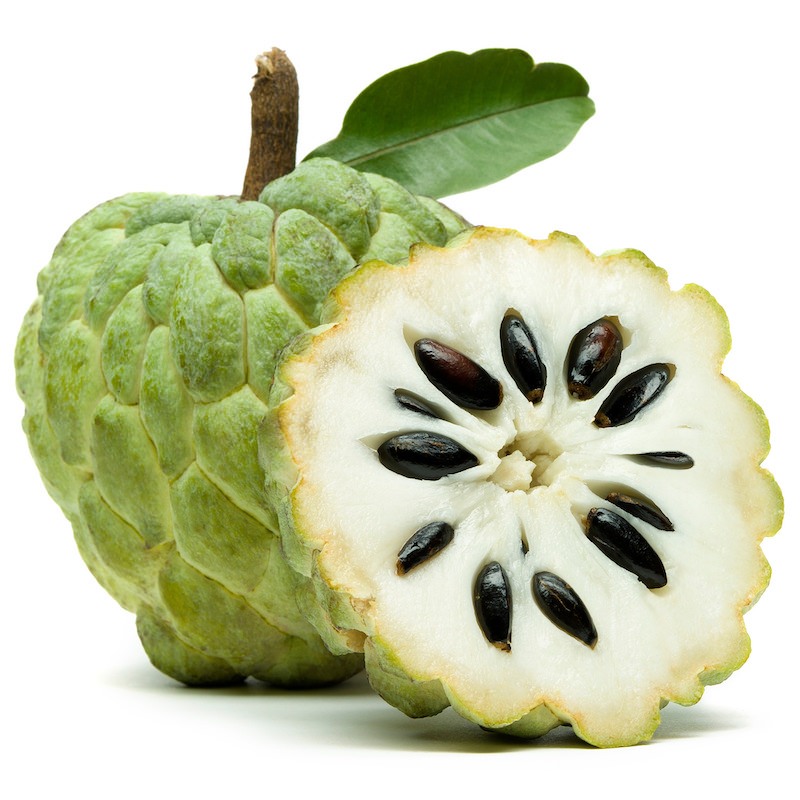Annona squamosa is a small, well-branched tree or shrub from the family Annonaceae that bears edible fruits called sugar-apples or sweetsops. It tolerates a tropical lowland climate better than its relatives Annona reticulata and Annona cherimola (whose fruits often share the same name) helping make it the most widely cultivated of these species. Annona squamosa is a small, semi-(or late) deciduous, much-branched shrub or small tree 3 to 8 metres (10 to 26 feet) tall similar to soursop (Annona muricata).
The fruit of A. squamosa (sugar-apple) has sweet whitish pulp, and is popular in tropical markets.
Branches with light brown bark and visible leaf scars; inner bark light yellow and slightly bitter; twigs become brown with light brown dots (lenticels – small, oval, rounded spots upon the stem or branch of a plant, from which the underlying tissues may protrude or roots may issue).
Thin, simple, alternate leaves occur singly, 5 to 17 centimetres (2 to 6+3⁄4 inches) long and 2 to 6 cm (3⁄4 to 2+3⁄8 in) wide; rounded at the base and pointed at the tip (oblong-lanceolate). They are pale green on both surfaces and mostly hairless with slight hairs on the underside when young. The sides sometimes are slightly unequal and the leaf edges are without teeth, inconspicuously hairy when young.
The leaf stalks are 0.4 to 2.2 cm (1⁄8 to 7⁄8 in) long, green, and sparsely pubescent.
Sugar Apple has high potential for home gardens in the hot humid lowlands of the tropics and subtropics. Sugar Apple tolerates light frosts but its fruits ripen poorly in cold weather climates. This species has been successfully introduced into Southern Florida, for example, but it does not thrive in California’s cooler climate. It can be propagated successfully from seed though Sugar Apple is often grafted by shield budding or inarching onto a seedling Sugar Apple or Bullock’s Heart (Annona reticulata) rootstock. Sugar Apple is tolerant of a wide range of soil salinity conditions but it does not tolerate water-logged soils. The trees are drought-tolerant and normally exhibit good growth in coarse-textured, even rocky, soils. Humid atmospheric conditions promote pollination. Plantations in arid regions sometimes use close tree spacing (approximately 3 m X 3 m) to maintain high humidity among the trees during pollination. Germination, normally requiring 30 days or more, is promoted by soaking seeds for 3 to 4 days or by seed scarification. The best seeds for planting are those sown one week after the fruits have been harvested. Seedlings normally bear fruit in 3-4 growing seasons. The addition of manure or fertilizer will promote fruit set and high yields.





Source: Wekipedia


